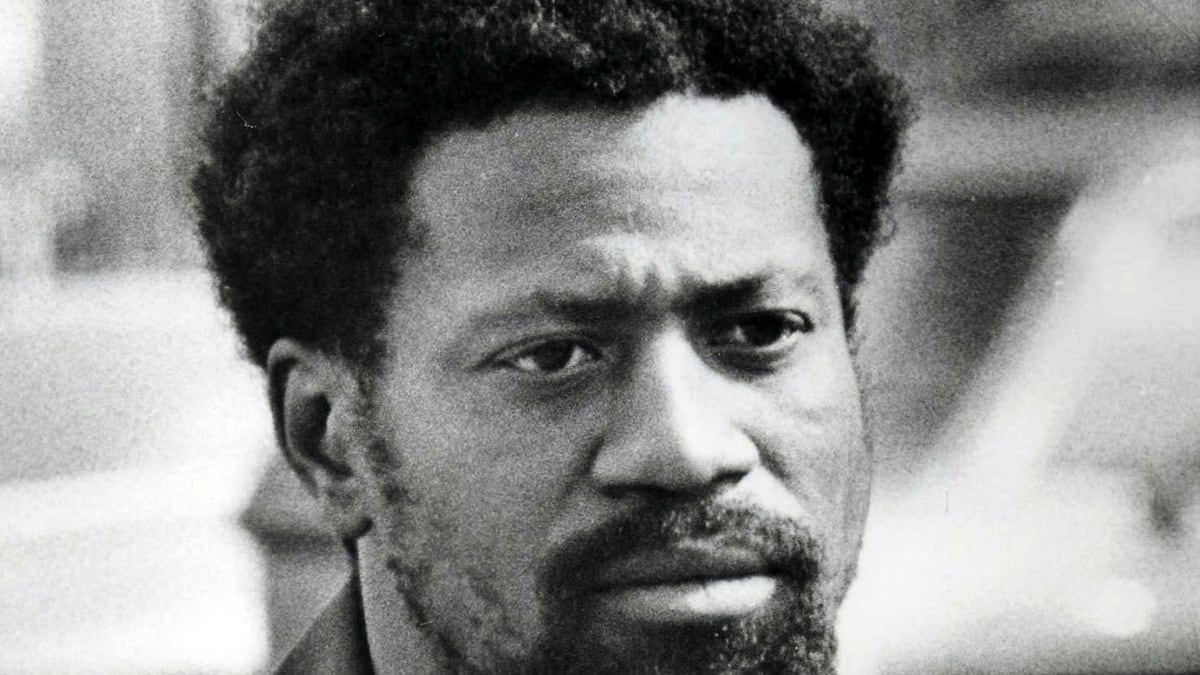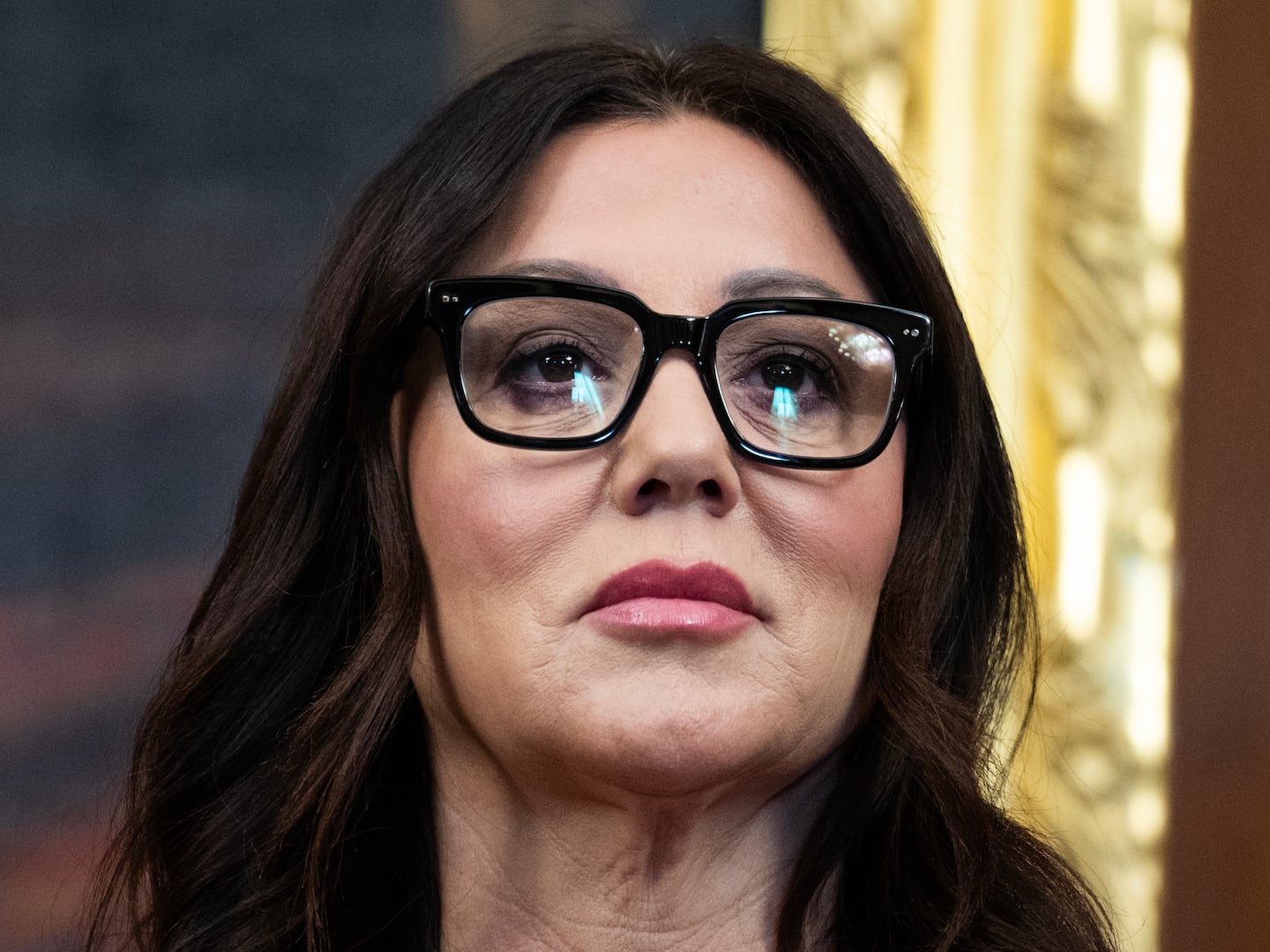When Guadalupe Acuna was a college student in Los Angeles, she was asked to write a paper for her criminal justice class about a serial killer. She chose the notorious Bobby Joe Maxwell—dubbed the Skid Row Stabber for a string of gruesome slayings in downtown Los Angeles in the 1970s.
Though the murders occurred near the home where Acuna grew up, what she didn’t realize was that her own grandfather, Jesse Martinez, was one of the alleged victims. It wasn’t until seven years later, when she relocated to Arizona, that her father came across the old school report in one of her moving boxes. “He asked me why I had the report,” says Acuna, now 31 and living near Tucson. “I had never seen him cry.”
Acuna’s grandfather was allegedly the first of the Stabber’s 11 victims, and the only one who wasn’t homeless. All were stabbed repeatedly on the streets of Skid Row during a three-month spree that began in the fall of 1978. Maxwell was arrested in the spring of 1979 and charged with 10 of the murders, but was never charged with Martinez’s slaying.
“The detectives told my father that he did it, but they just didn’t have enough evidence to charge him,” Acuna alleges. After a nine-month trial, a jury convicted Maxwell of two of the murders, deadlocked on five, and acquitted him of three. He was sentenced in 1984 to life in prison without the possibility of parole.
Over the years, Acuna tried to find out more about Maxwell and her grandfather’s slaying. She contacted the LAPD looking for answers, but her calls went nowhere. She even sent a letter to Maxwell at California State Prison in Lancaster, hoping to draw out a confession, but he never responded. “I was upset about the situation,” she says. “I just wanted closure and my father wanted closure.”

Her quest for answers hit a snag when the U.S. Ninth Circuit Court of Appeals in 2010 overturned Maxwell’s two murder convictions, because the prosecution’s key witness, a notorious jailhouse informant and now-deceased former cellmate of Maxwell’s named Sidney Storch, was found to be a “habitual liar.”
This past January, the U.S. Supreme Court refused to hear an appeal by the State of California of the Ninth Circuit’s ruling. And so the case was kicked back to the Los Angeles district attorney’s office to decide whether to retry the now 62-year-old Maxwell, or let him go free.
Bearded, bespectacled and clad in a brown jumpsuit, Maxwell—who maintains he is innocent—made a brief appearance at a court hearing last week, but the district attorney’s office postponed making a decision. Another hearing is scheduled for Sept. 25.
Outside the courtroom, Deputy District Attorney Bobby Grace told The Daily Beast that his office and the LAPD’s cold case unit are currently examining the 30-year-old evidence. “There is technology available now that wasn’t available before,” Grace says (after the Ninth Circuit’s ruling, cold case detectives obtained a DNA swab from Maxwell). “We also have to look at what witnesses are available. It was a serious case at the time.”
Back in the 1970s, Los Angeles was suffering from escalating gang violence and a skyrocketing murder rate. There were several serial killings, most notably the Hillside Strangler murders, which occurred during a four-month period from late 1977 to early 1978 in the hills above Los Angeles.
“Los Angeles had some propensity for serial killers particularly in the 70s and 80s,” says retired LAPD detective Kirk Mellecker, one of the task force detectives assigned to the Skid Row Stabber and Hillside Strangler cases. “It seemed like one after another. It was a great place for these types of people to stalk their prey.”
It was during this chaotic decade that the so-called Skid Row Stabber began his deadly spree in one of the city’s most impoverished and dangerous neighborhoods. “Anything south of First and Second streets you wouldn’t go down there without a gun,” Mellecker recalls.
The first attack attributed to the Skid Row Stabber occurred in the early morning hours of Oct. 23, 1978, when Martinez’s grandfather, then a 50-year-old cook, was discovered in an alleyway on Fifth and Wall streets. On Oct. 29, Jose Cortez, 32, was found in an alley off of East Third Street. The following day, Bruce Drake, a 46-year-old transient, was found dead on South Kohler Street. J.P. Henderson, 65, was discovered on Nov. 4, a few blocks away.
Detectives caught a break when three transients reported to the police that they spoke to the Stabber just before he killed 39-year-old David Martin Jones near the downtown public library on Nov. 9. The three men described Jones’s attacker as a soft-spoken, clean-shaven, heavy-set black man, standing around six feet tall, who walked with an unusual and slow gait. He told them his name was Luther and he was from Puerto Rico. One of the witnesses recalled he had a Caribbean or Spanish accent. One of the other witnesses disagreed. However, all three men agreed that the attacker walked toward Jones, who cried out moments later. Asked by the three men who attacked him, the dying Jones replied: “The guy that just left.”
Within days, the Stabber struck five more times. Francisco Rodriguez, on Nov. 11; Frank Reed and Augustine Luna on Nov. 12; Jimmy White Buffalo on Nov. 17; and Frank Garcia on Nov. 23. The last known victim, Jose Alvarez, was killed on Jan. 21, 1979. An inkling of the mindset of the Stabber was found etched on the bathroom wall of a Greyhound bus station. It read: “My name is Luther, I kill wino’s to put them out of their misery.”
On April 4, 1979, Bobby Joe Maxwell, a 28-year-old unemployed laborer from Columbia, Tenn., was arrested at an old movie theater in downtown L.A. and charged with the attacks on the 10 homeless men. Police learned Maxwell had been arrested for assault with a deadly weapon in the downtown area on Aug. 2, 1978. After spending 60 days in jail, he was released just days before the killings started. According to a Los Angeles Times story that appeared at the time, Maxwell was arrested again on Dec. 14 when he was found standing over a sleeping homeless person with a 10-inch double-edged dagger. He pleaded no contest to a charge of carrying a concealed weapon, and was released from jail on Jan. 18, three days before Alvarez was attacked.
The three homeless men who reported speaking to the Stabber were unable to identify Maxwell in a lineup, however. One of the eyewitnesses, William Stumpner, allegedly said: “You’ve got everyone up there that doesn’t look like him.”
The case against Maxwell was circumstantial. At his 1984 trial, prosecutors introduced evidence that Maxwell was found with a knife similar to one used in the murders, and that his palm print was recovered from a bench near where Frank Garcia died. Inside the home Maxwell shared with his sister, police also found a notebook of his that had references to Satan. One of the passages read: “Satan, praise be unto you.”
One of the prosecution’s key witnesses was 37-year-old Sidney Storch, a career criminal with a history of forgery and credit-card theft who would later earn the nickname the “Snitch Professor” and the “Informant Extraordinaire,” because he taught other informants how to fabricate confessions. Storch testified as an informant for the Los Angeles County District Attorney’s Office in six cases. But in 1988 he was accused of perjury in one case, and wound up on a D.A.’s list of informants who couldn’t be trusted. He was set to be indicted for perjury but died in a New York City jail before he could be extradited back to California.
During Maxwell’s nine-month trial, Storch testified that Maxwell was angry with himself for leaving behind a palm print at one of the crime scenes. For his part, Maxwell denied he had anything to do with the killings. But he was convicted of murdering Garcia and Jones, and also of one count of robbery. He was acquitted of the murders of Henderson, Rodriguez, and Buffalo, with jurors failing to reach a decision on the other five killings. He was sentenced to life in prison without the possibility of parole.
The long road of appeals to overturn Maxwell’s conviction began. After numerous failed appeals, the Ninth Circuit agreed to review Maxwell’s case, focusing on whether Storch’s alleged false testimony could have affected the judgment of the jury. In November of 2010, the Ninth Circuit panel of three judges voided Maxwell’s convictions and ordered prosecutors to release him or give him a new trial.
“The fact that Storch told several lies under oath contemporaneous with his testimony regarding Maxwell’s alleged confession does not alone establish that Storch lied about the confession itself,” the appellate court said in its ruling. “Storch’s perjury, however, indicates a willingness to lie under oath and lends credence to Maxwell’s arguments that Storch lied when he testified about the alleged confession and that the prosecution knew or should have known that Storch gave false testimony.”
In deciding not to hear the case this past January, U.S. Supreme Court Justices Antonin Scalia and Samuel Alito took a jab at the Ninth Circuit for second-guessing the state courts. "It is a regrettable reality that some federal judges like to second-guess state courts," Scalia and Alito wrote. "The intervening loss of witnesses and evidence will likely make it impossible to retry," Scalia noted.
Mellecker, the retired detective who investigated the Skid Row Stabber cases, is adamant the LAPD found its man. “There is no doubt he was the one who killed all these people,” he says. “[The Ninth Circuit] isn’t considering the people he has killed or the people he could potentially harm in the future if they let him out.”
Acuna, whose grandfather was murdered more than three decades ago, is still just looking for answers. “I want to know if he did it or not,” she says.






